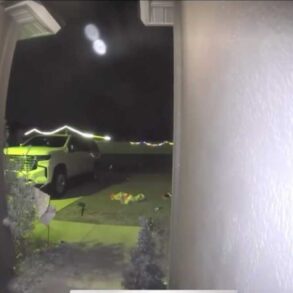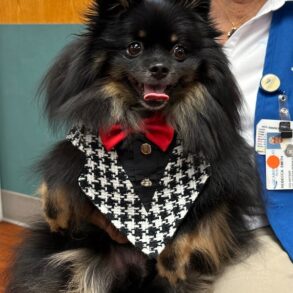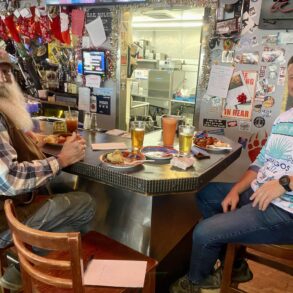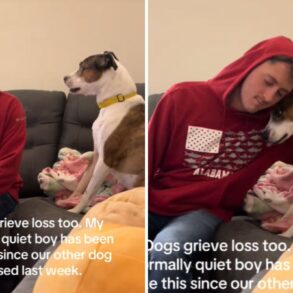In a remarkable display of collaboration and medical expertise, a Military Working Dog (MWD) named Dino Z012, a Marine Corps Base Hawaii – Kaneohe Bay Patrol and Explosives Detection Dog, received life-changing surgery to treat an uncommon condition that had left him in severe pain and unable to perform his duties.
The successful procedure was made possible through a partnership between the Veterinary Readiness Activity, Hawaii (VRA, H), the Tripler Army Medical Center (TAMC), and civilian veterinary specialists, including Dr. Baye Williamson, a boarded neurologist.
Dino’s journey began in May 2024, when he was evaluated by VRA, H Deputy Commander CPT (Dr.) Ciancarelli and the Fort Shafter Veterinary Branch for decreased drive to work and back pain. Initial radiographic assessment indicated the need for a computed tomography (CT) scan, which was coordinated with the TAMC CT Department.
With the assistance of MAJ Erin Hennessy, a Diplomate of the American College of Veterinary Radiology and Chief of Radiology at the Daniel E. Holland MWD Veterinary Hospital via telemedicine, a rare diagnosis was made: a 2-inch osteochondral fragment compressing the spinal cord of the MWD, known as Osteochondrosis dissecans (OCDs).
Due to the degree of discomfort, it was recommended to seek a local civilian specialist in veterinary neurology. CPT Ciancarelli coordinated with the Veterinary Emergency Referral Center (VERC) and Dr. Williamson to perform lumbar decompression surgery.
During the procedure, Dr. Williamson identified a significant neuroma (nerve swelling) on Dino’s nerve roots, which was the likely source of his pain. After successfully removing the fragment, it was sent to the Joint Pathology Center (JPC) for confirmation.
Dino was discharged after two weeks of hospitalized care and rehabilitation with VERC’s in-house certified canine rehabilitation practitioner. Although he was retired due to the advanced nature of the disease and other comorbidities, Dino is now comfortably living with his former Marine handler and enjoying a well-deserved retirement.
This case highlights the importance of military-civilian partnerships in the veterinary field, particularly in the Indo-Pacific region. By collaborating with civilian veterinarian specialists, VCOs and 68Ts can gain access to advanced medical techniques, expertise, and resources, ultimately enhancing readiness and ensuring the operational readiness of the commands they support.
The success of this partnership also demonstrates the MRC, P’s commitment to “Transforming the Indo-Pacific” through partnerships and health support for critical military assets like MWDs. It showcases the importance of building military-civilian partnerships in the veterinary field, facilitating knowledge exchange and resource sharing, and developing comprehensive training and response strategies.
Dino’s story is a testament to the dedication and expertise of the Army veterinary services, as well as the critical role that MWDs play in overall mission readiness. As his handler noted, “It means the world to me to have him recovered and happy and practically pain-free now. Watching him run and jump and keep up with our younger dogs just makes me so happy because it used to make me so sad to see him limping and in pain.”
The Veterinary Readiness Activity, Hawaii, and the Medical Readiness Command, Pacific, are proud to have played a role in Dino’s successful surgery and recovery, and look forward to continuing to build strong partnerships with civilian veterinary specialists to ensure the health and readiness of our military working dogs.
This post was originally published on this site be sure to check out more of their content.











































